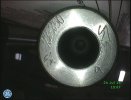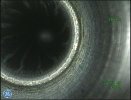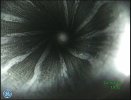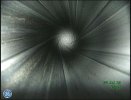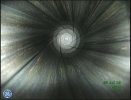RockyMtnMT
Official LRH Sponsor
I want to start a thread to discuss throat erosion as it relates to velocity. There has always been the thinking that the higher the velocity of a gun the faster the barrel will wear out. I think this thought comes from comparing slower cartridges to faster cartridges. Like comparing a 300 rum to a 308 win. Obviously one is faster than the other and the faster of the two has much less barrel life. I want to discuss barrel life of the same cartridge loaded at high or low velocity.
The way I see barrel life and how a barrel wears out, is a function of heat and pressure. Cartridges that are more over bore well wear out barrels faster. It is relative to the amount of powder burnt compared to the relative size of the bore. So a 22-250 runs less powder than a 30-06 and burns out a barrel faster. Not because of the amount of powder burnt but because the relative amount of powder to bore size is much higher for the 22-250. So this validates the thinking that overbore cartridges will have less barrel life. The higher concentration of powder burning in a smaller area of throat creates more heat per square inch of bore surface. This all makes sense and is proven out.
What I want to discuss is weather or not increased velocity in the same cartridge changes barrel life. Since I mentioned the 308 win, let's use it for comparison. Let's use a generic bullet for now.
If we load the 308win with a 215g bullet at a velocity of 2450 fps and a pressure of 61,300 psi and compare it to loading a 110g bullet at a velocity of 3450 fps and a pressure of 61,300. Which one burns out the barrel faster and why? I have not tested this and likely never will. It would need two identically built rifles shot sxs and carefully monitored throat wear. My contention is there will be very little difference in barrel wear.
The way I see barrel life and how a barrel wears out, is a function of heat and pressure. Cartridges that are more over bore well wear out barrels faster. It is relative to the amount of powder burnt compared to the relative size of the bore. So a 22-250 runs less powder than a 30-06 and burns out a barrel faster. Not because of the amount of powder burnt but because the relative amount of powder to bore size is much higher for the 22-250. So this validates the thinking that overbore cartridges will have less barrel life. The higher concentration of powder burning in a smaller area of throat creates more heat per square inch of bore surface. This all makes sense and is proven out.
What I want to discuss is weather or not increased velocity in the same cartridge changes barrel life. Since I mentioned the 308 win, let's use it for comparison. Let's use a generic bullet for now.
If we load the 308win with a 215g bullet at a velocity of 2450 fps and a pressure of 61,300 psi and compare it to loading a 110g bullet at a velocity of 3450 fps and a pressure of 61,300. Which one burns out the barrel faster and why? I have not tested this and likely never will. It would need two identically built rifles shot sxs and carefully monitored throat wear. My contention is there will be very little difference in barrel wear.

